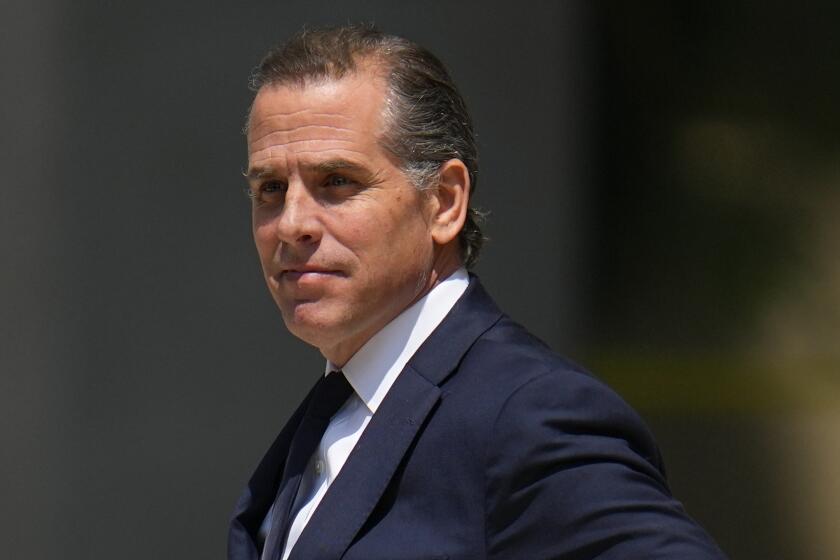Leaders Discuss School Violence at Forum
- Share via
JACKSON, Miss. — Better, more coordinated technology, sensitivity to warning signs and getting kids involved in their school’s safety could possibly have staved off the carnage at Columbine High School last month, Colorado officials told a conference of U.S. attorneys general Monday.
But access to guns and a national infatuation with violent imagery and entertainment lie closer to the heart of the problem, several of the Colorado leaders concluded.
The officials had gathered along with 38 members of the National Assn. of Attorneys General for a symposium on school violence prevention. The event was planned months before the April 20 shootings in Littleton, where 15 people, including the two gunmen, died and 23 others were injured at Columbine High School. The panel of Colorado officials joined child development experts, educators and community mental health care workers in trying to draw lessons from the disaster.
Officials stressed that the true lessons of the Colorado tragedy are deep, complex--and cultural.
“While we’re all focused on those 12 children who lost their lives in Littleton,” Mississippi Atty. Gen. Mike Moore told the group, “12 kids die every day [from gun wounds], every single day, in this country.” Last year, he noted, more than 6,000 students were expelled for bringing guns or explosive devices to their schools.
Jefferson County Dist. Atty. Dave Thomas, saying he was still shellshocked by the experience, attributed the killings to deep dysfunctions in the culture at large.
Noting that affluent, educated Jefferson County residents had seemed to have “everything that you think you would need” to prevent such an outbreak, Thomas said: “I believe that the roots of what occurred in Jefferson County have their genesis in our fascination, our obsession, with violence” and a culture of bullying that may be pervasive in American schools.”
Multi-pronged intervention in early childhood could fortify children now vulnerable to those influences, developmental specialist Craig Ramey of the University of Alabama said.
Noting that there is a direct correlation between violence and poor academic performance, Ramey said research indicates that underprivileged children could compete with the children of college graduates if an array of programs are there to support them.
“Family support, early childhood education, coupled with good health care produce significant effects,” but only if used in conjunction, Ramey said.
While the most recent killings shaded almost every presentation, states have been working on legislation and educational programs to reduce teen violence for years now.
Atty. Gen. Ben Chandler of Kentucky, a state that has experienced several massacres at the hands of teenagers over the last few years, told his colleagues about the state’s latest effort, a law that requires courts to notify schools of student crimes, and schools to alert authorities when they have similar information.
In Maine, Atty. Gen. Andrew Ketterer launched the Civil Rights Team Project, a free program in which high schools and middle schools address violence from the perspective of civil rights law. Many hate crimes, Ketterer told the group Monday, are preceded by low-level civil rights violations that go unchallenged.
Essential to the project, he said, is student involvement since teenagers often know about violence or harassment but do not tell adults.
Like his colleagues, Ketterer also said such efforts were meaningless without a challenge to the violence that permeates American culture.
“Children don’t do what we say, they do what we do,” he said. “They see violence in the workplace reported, and that sets the stage for school violence.”
More to Read
Sign up for Essential California
The most important California stories and recommendations in your inbox every morning.
You may occasionally receive promotional content from the Los Angeles Times.










